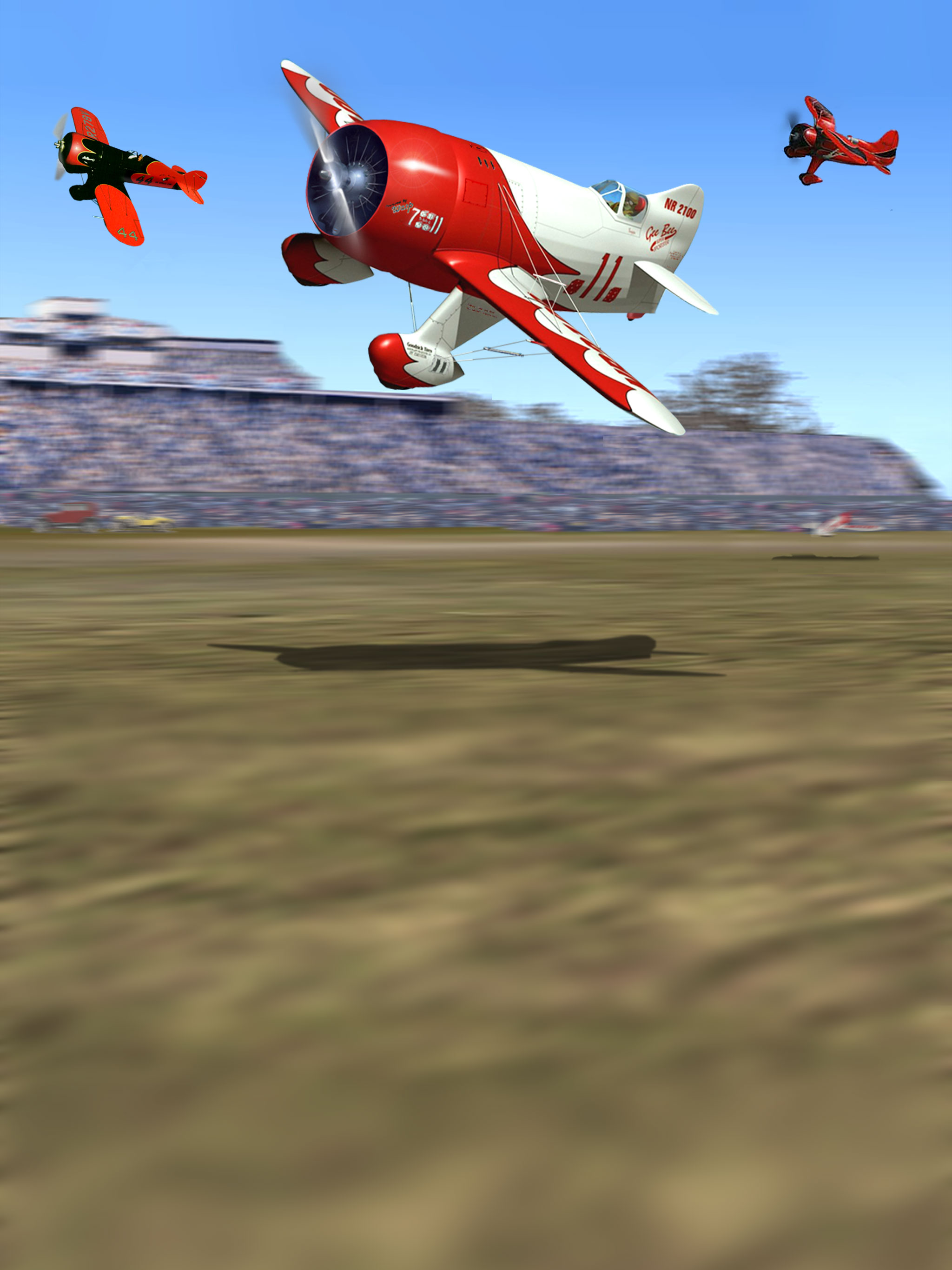



|
All eyes craned upward at the speedy little red-and-yellow biplane cutting through the Kansas skies: one of the top two or three fastest aircraft in the world, the Laird LC-DW-500 Super Solution. It was being flown by perhaps the consummate airman of the age, Major James H. “Jimmy” Doolittle, U.S. Army Air Corps, retired. Less than two weeks remained before Labor Day weekend and the 1932 National Air Races at Cleveland, Ohio. The main events—the Burbank-to-Cleveland Bendix Trophy endurance race and the closed-course, 100-mile Thompson Trophy dash—demanded two very different types of aircraft, but Doolittle believed he had a plane capable of winning both. Its predecessor, the Laird LC-DW-300 Solution, had been the only biplane ever to win the Thompson Trophy. In the more powerful Super Solution, Doolittle had won the 1931 Bendix and gone on to set a transcontinental speed record of 2,882 miles in 11 hours, 16 minutes, and 10 seconds, while averaging 217 mph. But in the seventh lap of the Thompson, the plane’s 525-hp Pratt & Whitney Wasp Junior radial engine blew a piston, forcing Doolittle to drop out. “I spent two hours trying to jar the gear loose...nothing worked,” recalled Doolittle. Finally he resigned himself to bellying in the LC-DW-500. He emerged unhurt, but with the plane’s prop blades bent and fuselage crumpled, the Super Solution would never make the Nationals. The news spread rapidly across an aviation-crazy nation, for Doolittle was arguably the most famous pilot in the world. As an Army lieutenant, he had won the 1925 Schneider Trophy seaplane race; he was the first man to perform an outside loop, and the first to complete a “blind” flight from takeoff to touchdown by instruments alone. He had been first to cross the country in less than 24 hours, first in less than 12 hours, and first to fly from Ottawa to Mexico City via Washington, D.C., in one day. On top of all that he had a doctorate in engineering from M.I.T. But he was not destined, it appeared, to ever win the Thompson Trophy. However, four days after his crash in the Super Solution, Doolittle received a phone call from Zantford D. “Granny” Granville, eldest of five brothers who had set up an airplane factory in an abandoned dance pavilion in Springfield, Mass. Chief engineer Bob Hall's “Gee Bee” (for Granville Brothers) racers had dominated the 1931 Nationals. In the Thompson, Hall took a Model Y Senior Sportster to fourth and Lowell Bayles flew a Wasp Jr.-powered Model Z Super Sportster to victory. 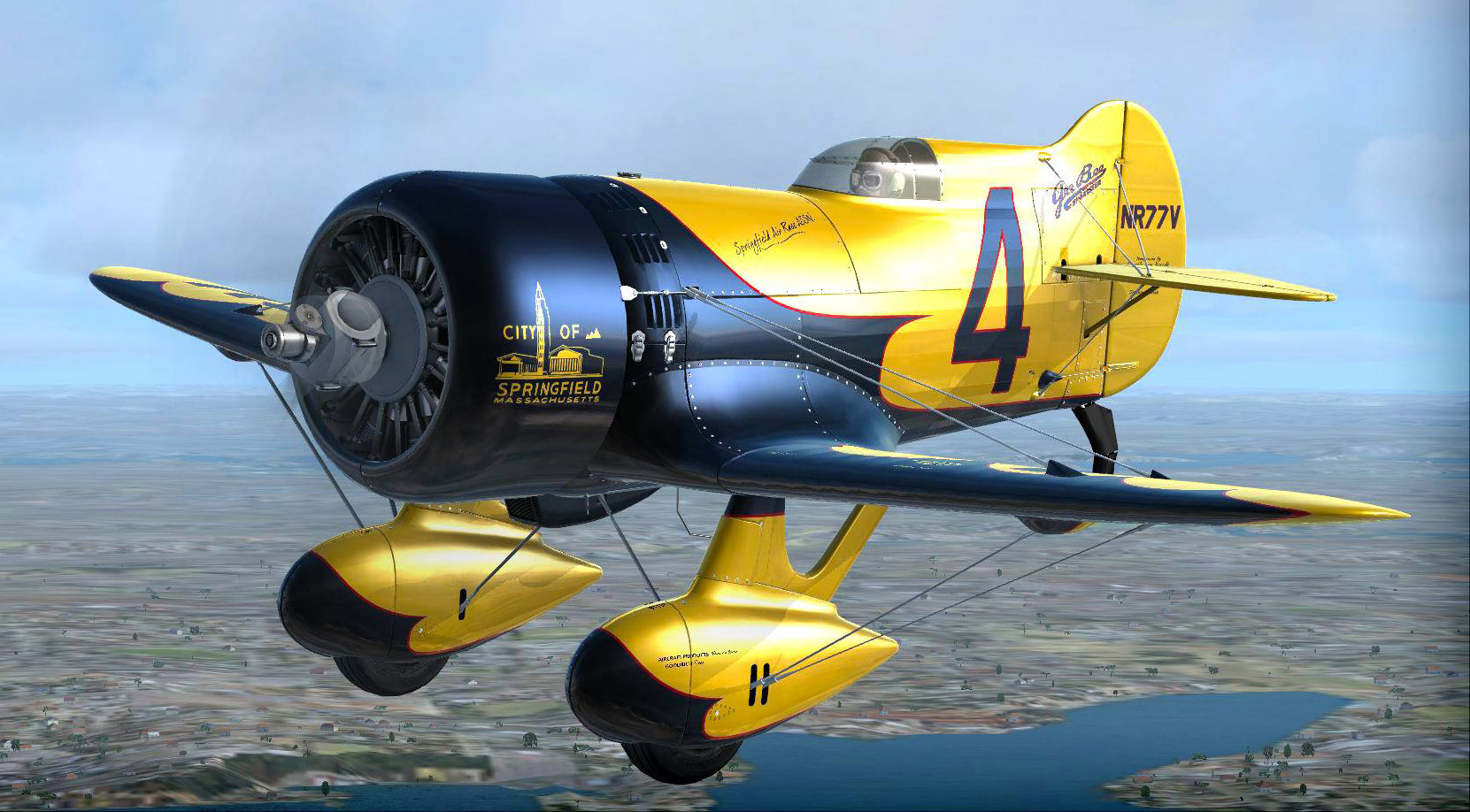
Gee Bee Model Z But Hall had since split with the Granvilles, and in search of ever greater speed, the brothers had simply bolted the most powerful radial engine in the world—a nine-cylinder, supercharged, 740-hp Pratt & Whitney R-1340 Wasp Senior radial—into the Model Z. But in December, while trying to set a new air speed record, Bayles had crashed in the Gee Bee and died. Newsreel headline in bad taste: Lowell Bayles flies the Gee Bee Model Z into history. (Silent) Detroit, MI, Dec. 5, 1931. Movie footage and analysis of the wreckage revealed that a loose fuel cap had come off and smashed the Model Z's canopy, causing Bayles to lose control. It looked like a freak accident, and there were plenty of pilots still willing to fly a Gee Bee. The Granvilles and their new chief engineer, Howell “Pete” Miller, came up with two of the most powerful models yet—the R Series Super Sportsters, race numbers 7 and 11—tailor-made to win the 1932 Nationals. For the Bendix there was No. 7, the Wasp Jr.-powered R-2; for the all-out Thompson Trophy event there was a plane that was to assume a nearly mythological place in aviation history: No. 11, the Gee Bee R-1. The Gee-Bee R-1 had a larger engine cowling to accomodate its much larger Wasp Sr. radial engine 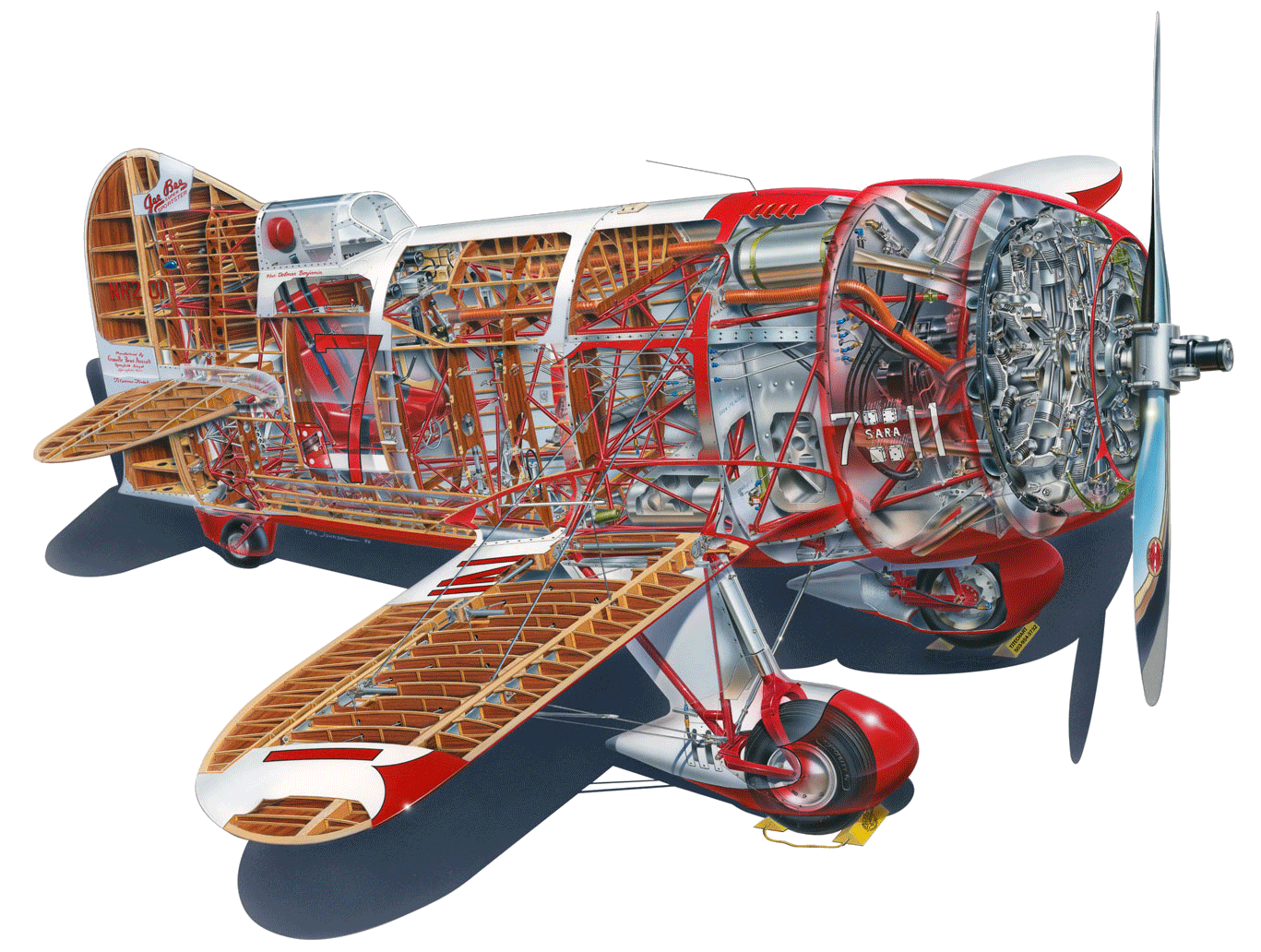
Gee Bee R-2 cutaway. Built for the long-distance Bendix Trophy Race, the R-2 had a larger fuel tank. Russell N. Boardman, famous long-distance flyer and stunt pilot, intended to fly the R-1 in the Thompson, and with it he had already touched 275 mph. But in the middle of August he had spun a Gee Bee Sportster E into the ground. As with Doolittle’s Super Solution wheels-up landing, Boardman was hurt just enough to put him out of competition. The Granvilles needed a pilot, and Doolittle needed a plane. Would he care to test-fly the R-1? 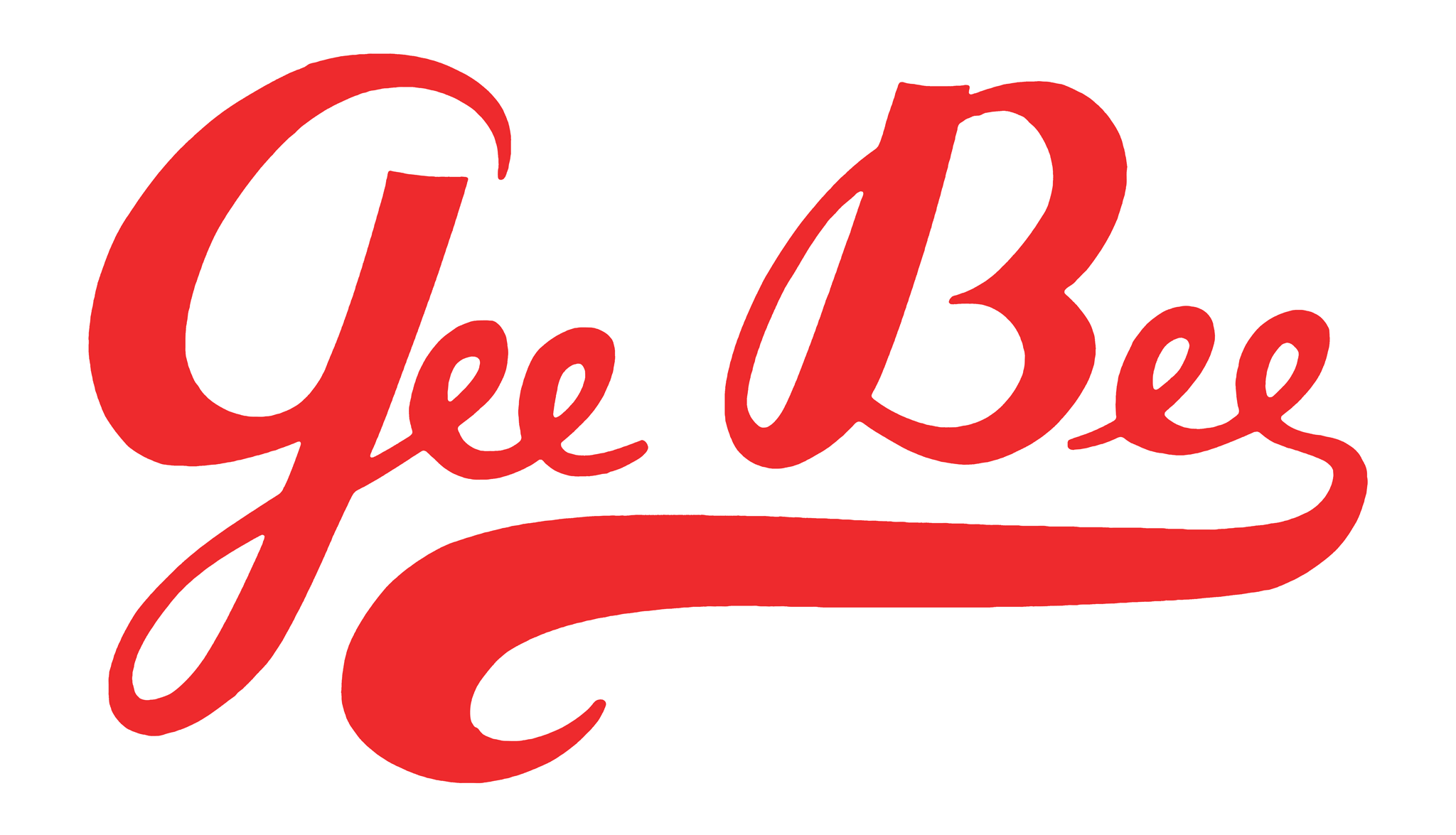
Doolittle flew to Springfield the next day for a look. The Granvilles proudly rolled out their exceptionally well-finished creation, its quintessentially ’30s scalloped, black-piped, red-and-white paint scheme (reportedly inspired by the Coca-Cola logo), set off by red 11s and dice showing 5 and 6. But Doolittle was less concerned with the finish than the design. Already known to the aviation press as “the Flying Silo,” the R-1, essentially a scaled-up version of the Model Z in which Bayles had died, struck Doolittle as “all engine with minuscule wings and a bomblike fuselage.” The Granvilles had simply streamlined a Wasp Sr. engine with a modicum of bodywork, adding just enough wing and control surface area to keep it airborne, barely under control, and moving at nearly 300 mph. Doolittle knew the airplane would be extremely hot to handle. After his one brief test flight, Boardman had reported severe directional instability, and the Granvilles had added two square feet of fin to the rudder. Doolittle clambered into the claustrophobic cockpit and asked that the engine be fired up. As the Wasp Sr. roared to life, one of the Granvilles, no doubt thinking ahead to locating the wreckage, asked where he was headed. “I’m going to Cleveland, of course!” answered Doolittle. He took off and, without even a turn around the field, headed west. In less than two hours the Granvilles received a telegram: “Landed in Cleveland O.K., Jim.” It was already too late to contest the Bendix, the inaugural event of the Nationals. “America’s No.1 Test Pilot” Lee Gehlbach flew the R-2 from Burbank to Amarillo without mishap. But after taking on 300 gallons of fuel—which doubled the R-2’s weight—he had to build up about 200 mph just to take off again in the high, thin air. Then the plane’s oil line split, and with his canopy smeared black, Gehlbach barely made it to Illinois. Deciding the leak could not be fixed, he refilled his oil tank, removed the canopy, and put up with oil in his face the rest of the way to Cleveland. He made fourth place; first, second and third all went to sleek, low-wing monoplanes of a design that was to leave its mark in air races to come: the Wedell-Williams Model 44. Down in Patterson, La., with the backing of millionaire lumberman Harry Williams, former barnstormer and smuggler Jimmy Wedell was turning out aircraft, as he liked to say, “hot as a .44 and twice as fast,” capable of tackling both endurance and sprint races. He had an instinctive eye for racing-plane design; the fact that he was blind in the other eye didn’t stop him from racing his own planes and taking second in the Bendix in his own Model 44, No. 44, a half-hour behind winner Jimmy Haizlip’s stablemate No. 92. 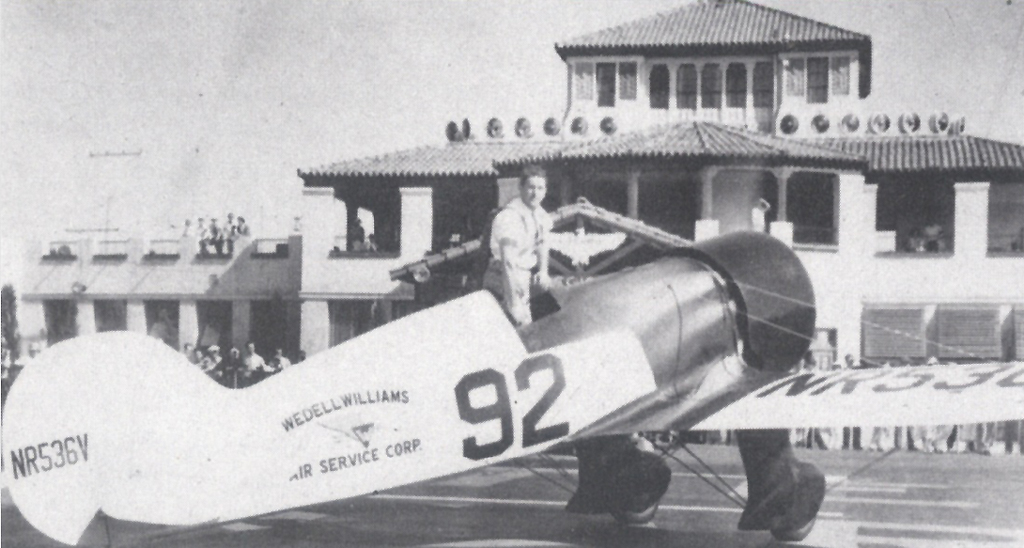
Haizlip in the Wedell-Williams Model 44, #92, before takeoff from Burbank to win the 1932 Bendix Trophy Haizlip, an ex-partner of Doolittle's, was now after his cross-country record. He simply buzzed the big, checkered Bendix pylon at Cleveland to get his time recorded (8:19:45) before going on to New York and shaving nearly an hour off Doolittle’s time. He was joined there by the third-place finisher, self-styled “Colonel” Roscoe Turner of the “Nevada Air Force.” In the slowest Wedell-Williams, the flashy red-and-yellow No. 121, Turner had still beaten Gehlbach's Bendix time by nearly 40 minutes. Despite his poor showing, Gehlbach had nothing but praise for the Gee Bee R-2, maintaining, “Number 7 is the most wonderful handling ship I’ve ever flown.” For his part, Doolittle publicly described No. 11 in similarly glowing terms: “She's got plenty of stuff. I gave her the gun for just a few seconds and she hit 260 like a bullet without any change for momentum and without diving for speed, and she had plenty of reserve miles in her when I shut her down.” Privately, however, both pilots had deep reservations about the Gee Bees. Gehlbach confided, “Jimmy and I both considered they were too hot for anybody to handle.” As for the R-1, Doolittle said simply, “I didn't trust this little monster. It was fast, but it was like balancing a pencil or an ice cream cone on the tip of your finger. You couldn’t let your hand off the stick for an instant.” At low speed its minimal control surfaces provided little authority; at high angles of attack—nose-up, as in turns or landings—the nose and wings blocked airflow to the tail, as Doolittle learned when he took the plane up to practice pylon turns and it snap-rolled twice before he could stop it. “If I hadn’t had some altitude,” he guessed, “I would have been dead.” With this in mind, he refrained from entering any of the lesser events, saving himself, his plane and his luck for the Thompson. 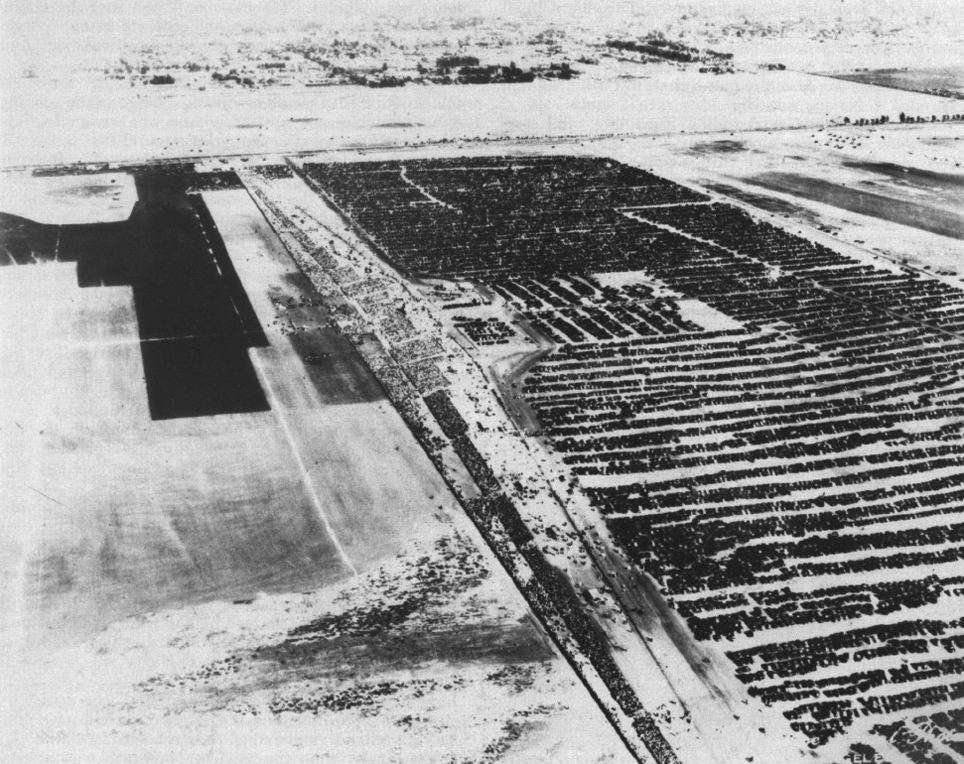
How big was air racing in the 1930’s? In this aerial view of Cleveland Municipal, those black dots on the right are cars in the parking lot. Grandstands run up the center of the photo; start/finish line crosses at center-left. See course map below. Qualifications were an official event in themselves. Minimum qualifying speed had been set at 200 mph, 25 mph faster than the previous year. But high-speed, straight-ahead flight was the R-1's forte, and when Doolittle went up, he was less concerned with qualifying than breaking the world landplane speed record, set in 1924 at 278.48 mph. Keeping the Gee Bee low (excessive diving to gain speed was strictly prohibited), he flashed through the three-kilometer speed trap four times for an average of 293.19 mph. It was more than enough to beat the record by the requisite 4.97 mph, but officials disallowed the attempt because the Gee Bee did not have a barograph installed to record its maximum height. An annoyed Doolittle told reporters he thought the officials should have seen to such details: “A race pilot has all he can do to fly his ship.” And his worries about overstressing his aircraft had been borne out. The R-1's engine cowling had broken several of its fastenings and nearly pulled away, and its controllable-pitch propeller was vibrating in flight, not a pleasant sensation at nearly 300 mph. The Granvilles' ground crew hurriedly made repairs and adjustments, and that afternoon (with barograph duly installed) Doolittle went up for another try. In four passes he qualified easily for the race, but his average of 282.672 mph fell .77 mph short of the record. And on his last run the crowd gasped as he narrowly missed a stand of trees to the north of the field. Doolittle shrugged it off (“I must have been at least four feet over them”), but for two days he did not venture up again. Onlookers could only wonder: Had the R-1 nearly gotten away from him? Gehlbach wasn't doing much better. On Saturday, flying the R-2 in a 60-mile race, he missed a pylon on the first lap; race rules required him to circle back and recover it and, unable to make up the time, he finished almost two minutes behind Haizlip and Wedell. Then, while taxiing blindly through the Granville pit, he nearly rammed the R-1; mechanics’ frantic efforts to hold him back convinced him to cut his engine with eight feet to spare. 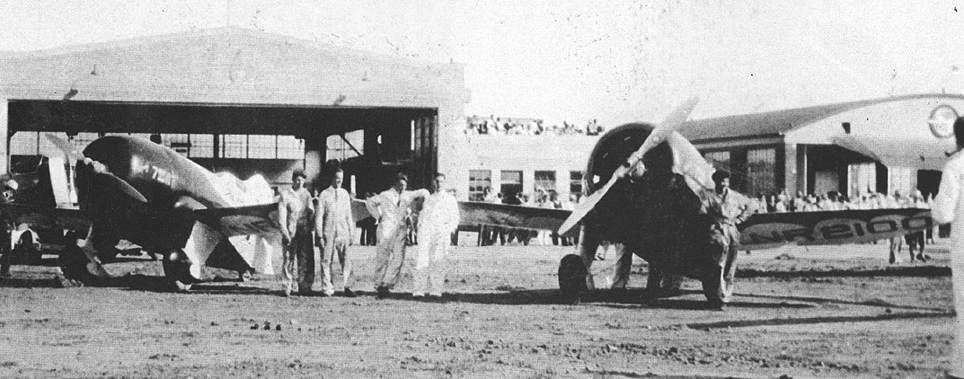
The Gee Bee R-2 (left) and R-1 in the pit area at Cleveland. Again, note the much wider cowl opening on the R-1 to accomodate the much larger Wasp Sr. radial engine At noon, Doolittle finally reappeared with the R-1 for a last crack at the landplane record. Conditions were mixed: hot and humid, with high clouds and an 8 mph crosswind, to which the Gee Bees—with about 30 square feet more side area than wing area—were extremely sensitive, especially at slow speeds. Luckily, Doolittle didn’t plan to go slow, not with “Granny’s Built-In Tail Wind” behind him. Six times he roared through the speed trap, this time claiming a maximum of 309.040 mph and averaging a world-record 296.287 mph. “I could have shoved the ship up to five miles an hour faster,” he claimed afterward, “but I didn’t let it out to the full extent. It was made for Russell Boardman, who has his heart set on making the world’s record, and he can give the ship all it’s got after he recovers from his accident.” But Wedell, Turner and Haizlip qualified second, third and fourth respectively, with speeds ranging from 277.057 to 266.440 mph. Even with the same engine, Gehlbach’s R-2 clearly was not up to their challenge and, at 247.339 mph, he barely eked out a lead over the “father” of the Gee Bee, Bob Hall. 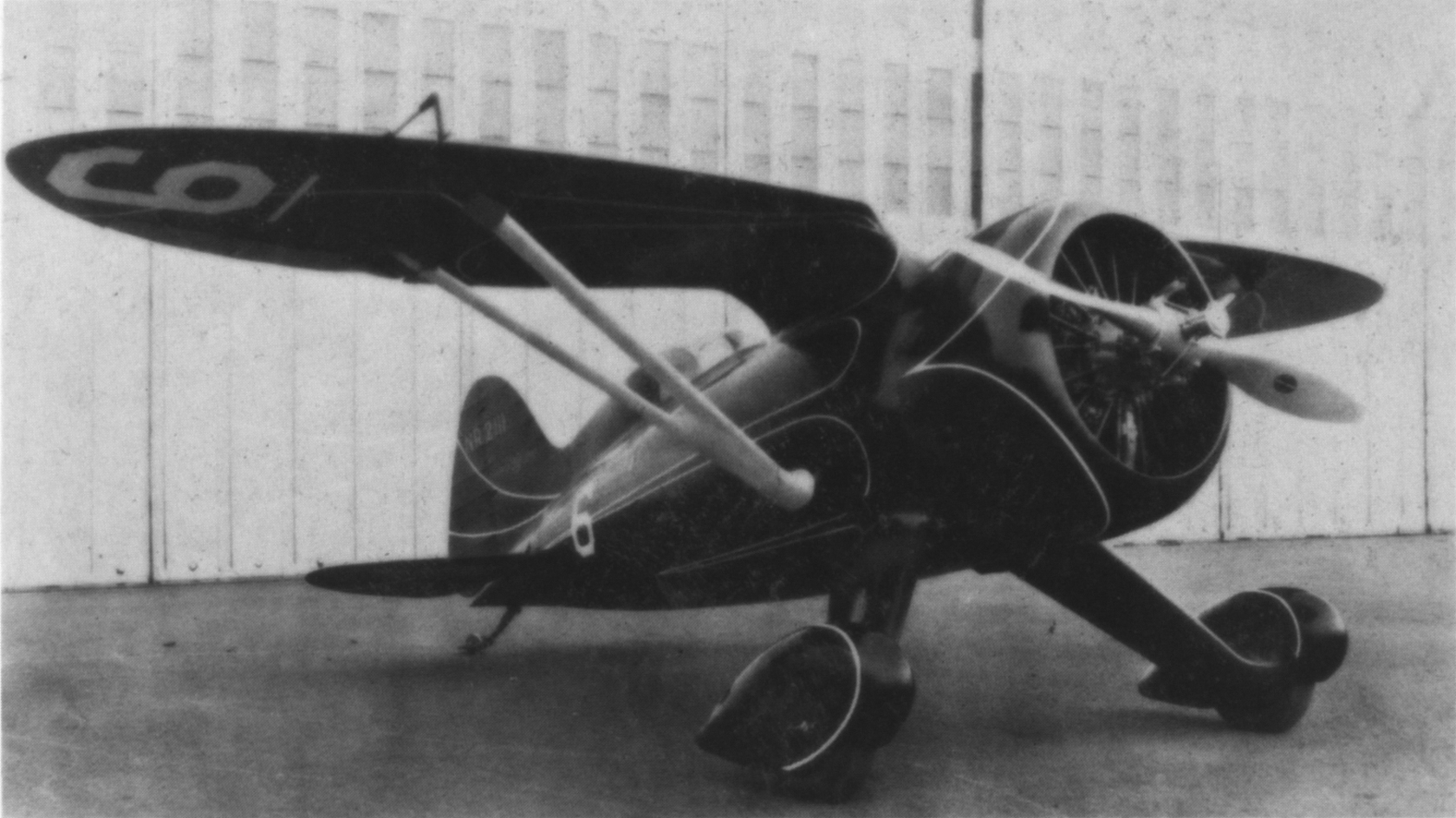
Bob Hall’s Bulldog, with interim rudder. (Original rudder was smaller, rudder used in 1932 Thompson Trophy race was larger.) After his break with the Granvilles, Hall had secured a commission from the New York Guggenheim family to build a racing plane for the family pilot, playboy Russell Thaw. Hall’s Wasp Jr.-powered Bulldog looked somewhat like a red-and-black Gee Bee with high-mounted gull wings, but required extensive and repeated rudder modification, and Thaw refused to fly it, claiming, “the ship is not my idea of a racer.” Hall had missed the Bendix wrangling with the Guggenheims for permission to fly the Bulldog himself, but finally managed to qualify it for the Thompson at 243.717 mph. Behind Hall, at 237.738, was Ray Moore in the silver Rider No. 131, San Francisco I, built by West Coast engineer Keith Rider and powered by a 6-cylinder, 160-hp Menasco in-line engine. During a minor event in the 1931 Nationals, Moore had placed second to the Gee Bee Z and had actually beaten Wedell’s Wedell-Williams. That year, the Rider was ready for the big time; on Saturday, Moore came in just 25 seconds behind Gehlbach. A proven giant-killer brought up the rear: Bill Ong in the Howard DGA-5 monoplane, called simply Ike. Its builder, Benjamin O. “Go-Grease Benny” Howard, had caused a sensation in 1930 when his diminutive DGA-3 Pete, powered by a Wright Gypsy radial producing just 90 hp, took no less than third in the Thompson. Although Pete had not fared as well in 1931, this year Howard was back with two updated, Menasco-powered models, the DGA-4 Mike and DGA-5 Ike (“They Look Alike”). Lighter and faster, Ike had already taken two firsts and a second in preliminary events and had qualified for the Thompson at 213.855 mph. Benjamin O. “Go-Grease Benny” Howard, the Howard DGA-4 Mike (left and center) and DGA-5 Ike. (“They Look Alike.”) Qualifying last, and just over the wire at 202.490 mph, was Les Bowen in the Gordon Israel Special. Although he had little hope of victory, Bowen could console himself with the knowledge that his qualifying speed would have sufficed to win the Thompson just two years earlier. Silent footage of the “dogfight” between an autogyro flown by John Miller and a Curtiss Pusher replica flown by Al Wilson. Wilson passed away of head injuries two days later. The two pilots were longtime friends. Saturday, Sept. 3rd, 1932 Despite the nearly 100-mph spread between the R-1 and the Israel, the Thompson Trophy contest—10 laps around a 10-mile triangle—promised aviation fans a Roman chariot race for the modern age. Already that week two planes had collided while contesting a pylon in a lesser race. Both pilots survived. On Saturday, however, a 1910 Curtiss Pusher replica and an autogyro were conducting a “dogfight” at low level in front of the grandstands when the autogyro landed in the target circle in front of the viewing stand, the Pusher buzzed it, was sucked into the downdraft of its still-turning blades and hit the ground. The pilot, Al Wilson, was killed. Sunday afternoon saw rain, but Labor Day dawned clear, although more storms were predicted for late in the afternoon. The Thompson was to commence at 5 p.m., and as the day wore on more than 50,000 aviation fans packed into the huge grandstand along the northwest edge of the Cleveland Municipal Airport. There were exhibitions of aerobatics, precision parachute jumps and dead-stick landings, and minor pylon races to amuse them; Bob Hall took his Bulldog up for a shot at Doolittle’s record, but fell disappointingly short, which did not bode well for his chances in the race. 
Packed grandstand at the 1932 Nationals 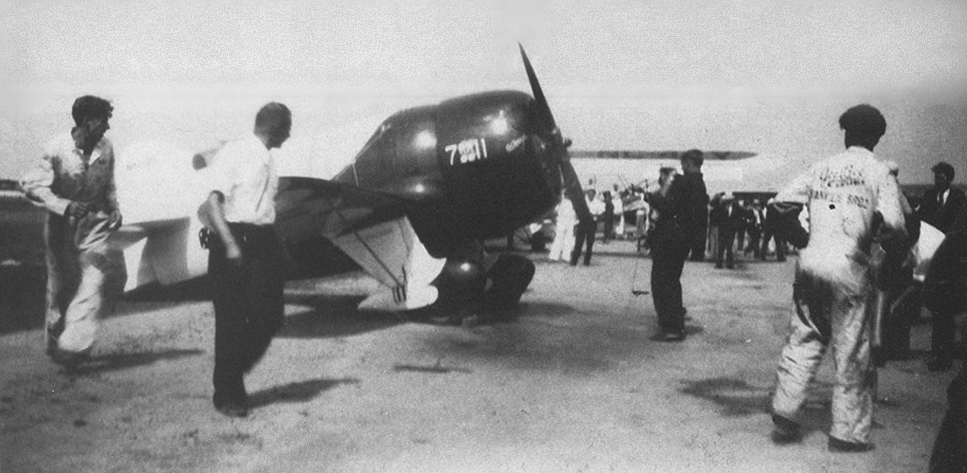
Disaster! Doolittle (in shirtsleeves) flees the burning R-1 as an alert mechanic (dark coveralls) brings an extinguisher to bear A little after 4 p.m., Doolittle climbed into the R-1. The big Wasp Sr. was fired up, and almost immediately disaster struck. A backfire ignited the fuel in the carburetor, and the R-1 burst into flame. Doolittle scrambled out and with a mechanic’s assistance quickly extinguished the blaze. A check under the cowling revealed only minor damage; Doolittle climbed back in, got a restart, and taxied out to the starting line as if nothing had happened. The eight brightly colored racing aircraft lined up in front of the box seats for the launch, but 5 p.m. came and went with no start. At quarter after, though, engines were run up and shimmering props flattened the grass for yards behind the aircraft. Their drone grew to a roar, a scream. The crowd came to its feet. A mortar boomed, the green starting flag fell, and they were off! Race start. 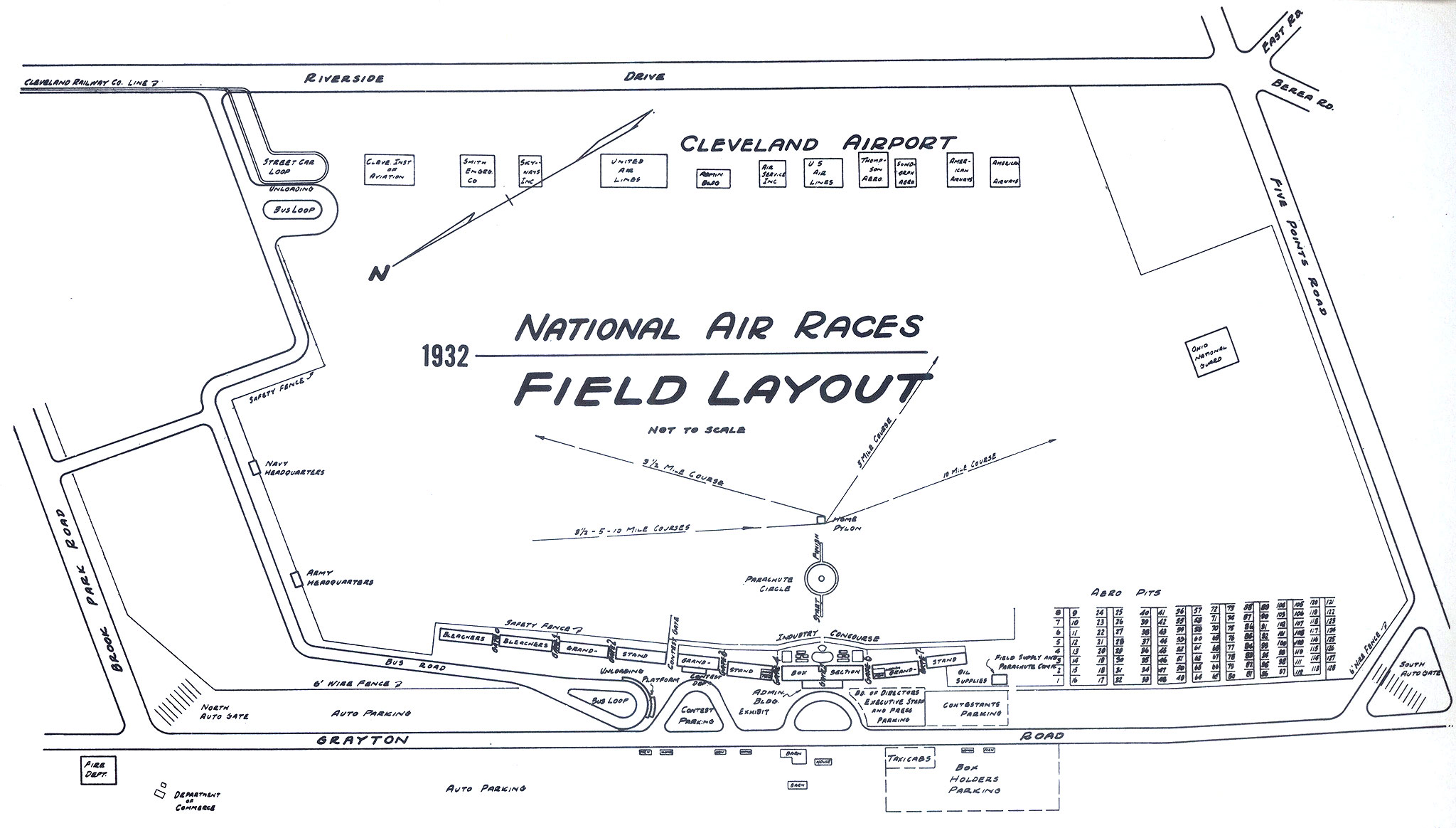
Course map. All aircraft approached from left (northeast). 3½-mile races doubled back to port, 5-mile races made sharp port turn, 10-mile races made gradual port turn First away in the staggered start was Hall’s Bulldog. Like the Granvilles, Hall had taken to controllable-pitch prop technology; the increased bite gave the Bulldog a correspondingly short takeoff run, but before Hall could extend his lead, Doolittle had firewalled his throttle and wound his own prop out to its full rpm, and the R-1 leaped into the air after the Bulldog. Then came Moore in the Keith Rider, then Wedell, Haizlip, Gehlbach and Turner, with Ong bringing up the rear in the Howard Ike. The dust cleared to reveal Bowen’s Israel still sitting at the starting line with a dead engine. When Doolittle rounded the first turn, he could see Hall out ahead, already roaring down the long east backstretch toward the No. 3 pylon, miles away. It looked like Doolittle could probably catch him there; plainly the R-1 was the faster plane, the fastest plane on the course, but it was also the least maneuverable. Remembering his earlier, nearly uncontrollable snap rolls, Doolittle recalled, “I didn’t know how much angle of bank would be safe when making pylon turns.” Energy versus maneuverability—the master equation of air combat—applied equally well to air racing. During his 1925 Schneider Trophy win, Doolittle had found that by diving his Curtiss R3C-1 seaplane 50 feet he lost only 2 mph in his turns. To climb between pylons and dive into turns, always staying well outside the traditional racing line—that was the way to beat a more nimble, but less powerful, opponent. Doolittle eased the stick back, gingerly bringing the R-1’s nose up. As the two planes raced down the backstretch, spectators in the grandstands, looking across the airfield, could see the Gee Bee poised above and behind Hall, its spatted wheels slung forward and down like the lowered talons of a bird of prey. Then both aircraft disappeared behind the tree line at the north end of the field. The drone of radial engines diminished as, unseen, the two planes rounded the far pylon, and then grew again to an oncoming roar. The crowd craned to the left for the first glimpse of the race leader and then, bursting into view in a streak of red and white, Doolittle and the R-1 led Hall and the Bulldog across the start/finish line. 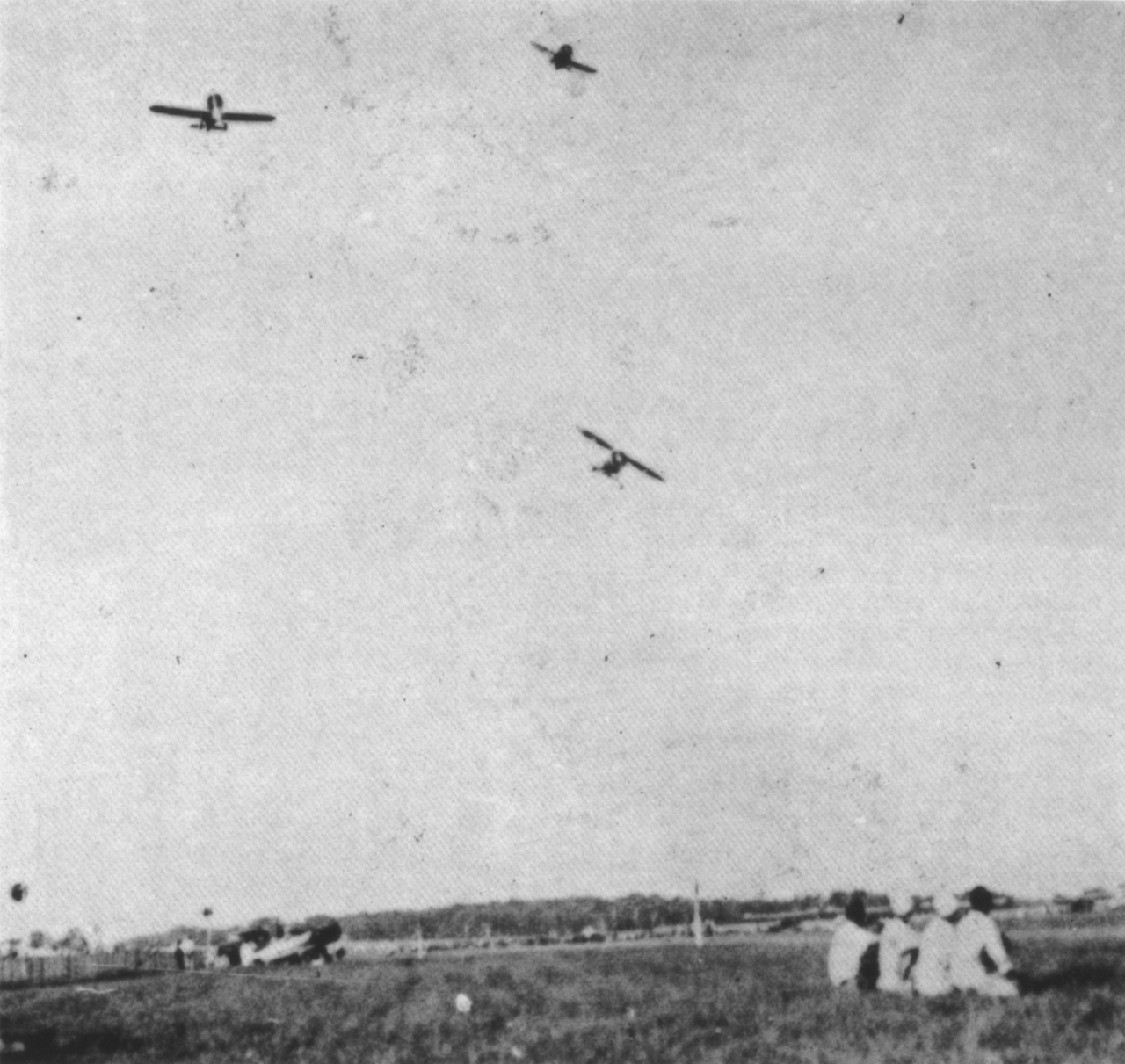
Hall’s Bulldog, bottom, in contention with one of the Wedell-Williamses (middle) and one of the Gee Bees (top) As the R-1 pulled ahead and the gap between first and second widened, that between second and third narrowed. Jimmy Wedell was pouring it to No. 44, coming up fast on Hall and leaving it to Gehlbach, Haizlip and Turner to decide fourth place. Moore had dropped back through the pack—the Rider’s Menasco engine was acting up—into the clutches of Ong and Howard’s Ike. 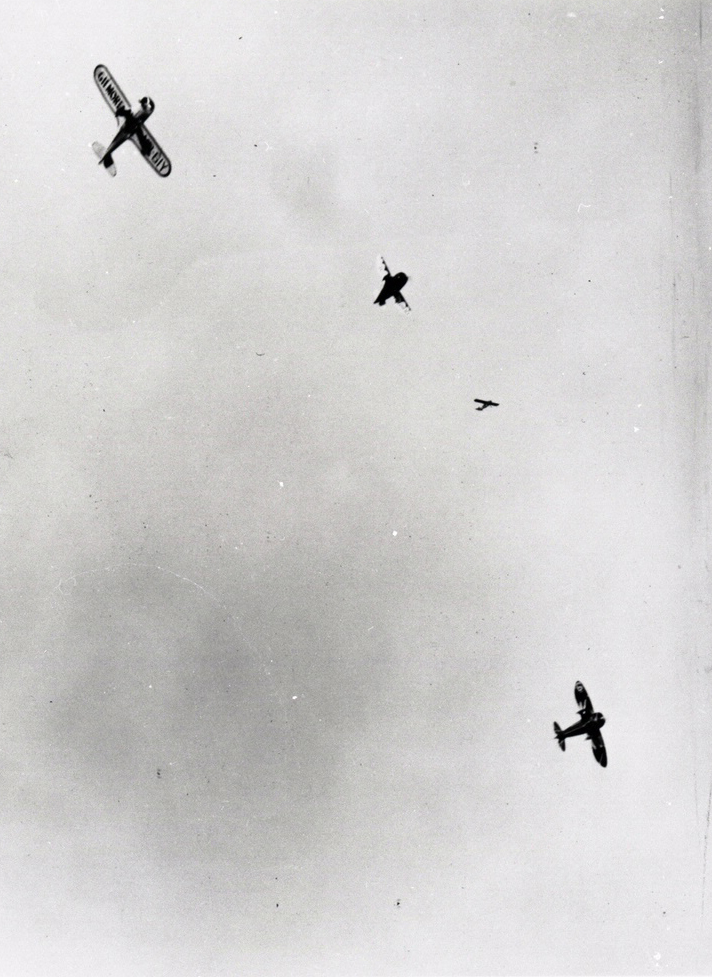
Top left, Wedell-Williams Model 44 (Turner). Top center, Gee Bee R-1 (Doolittle). Bottom right, the Bulldog (Hall). Small aircraft in distance is unidentified. Hall was beginning to understand Thaw’s reservations about the Bulldog. He might have been able to comfort himself that its Wasp Jr. was not up to the contest with the R-1’s Wasp Sr., but it should have been the equal of any other in the race. Yet the three Model 44s and Gehlbach’s R-2 flashed past in quick succession, and Hall resigned himself to staying ahead of the Menasco-powered also-rans. But on the same lap Moore’s engine gave up the ghost, and he had to set the Rider down. Ong claimed seventh place for his own—but Doolittle’s Gee Bee was hot on his tail! When he could take his eye off the racecourse ahead, from his open cockpit Ong could see the R-1’s big red nose bearing down on him, but there was little he could do about it. Ike just wasn’t in the same league. But as the Gee Bee flashed past him, the crowd gasped. The R-1 was smoking! A thin stream of black smoke marked its trail around the course. Few could forget seeing the Super Solution, in similar straits, drop out of the race the previous year; was fate about to tear another victory from Doolittle’s grasp? Reporters clustered around his wife and children, prepared to snap photos of them in case he crashed. But the big Wasp Sr. was running fine, flat-out and then some-the carburetor that had nearly immolated it before the race was simply set rich, and the smoke was just excess fuel in the mixture. Now Hall was in front of him again, the better part of a lap ahead but falling steadily back. Even so, it took Doolittle until the fifth lap to catch and pass him again, leaving only Gehlbach and the Wedell-Williamses to deal with. Wedell was still out in front of the pack, secure in second place; Haizlip’s Wasp was having trouble, but by a supreme job of corner-cutting he had so far managed to stay in contention with Turner and ahead of Gehlbach, who was bending the R-2 around the pylons in near-vertical turns but had pretty much settled for fifth. Behind them came the R-1, a blunt juggernaut bulling its way through the air, its gleaming fuselage now streaked with exhaust smoke. The gap inexorably narrowed until the end of the seventh lap. This time when the pack emerged over Brook Park Road at the north end of the field, Turner had finally put Haizlip firmly behind him, but Gehlbach was still hanging on. And Doolittle and his Gee Bee were about to put all three of them a lap down. The crowd cringed as, for a brief instant, all four aircraft flashed through the same airspace between the grandstand and the home pylon. Then they exploded past the start/finish line, and as the shock wave of their passing washed over the crowd, everyone could see Doolittle had gotten around the rest. Now there was only Wedell’s No. 44 ahead of him, with three laps still to go, and it began to dawn on the real aviation fans down there that this was history, that the question was not whether Jimmy Doolittle could win the 1932 Thompson Trophy—it was whether he could lap the entire field. 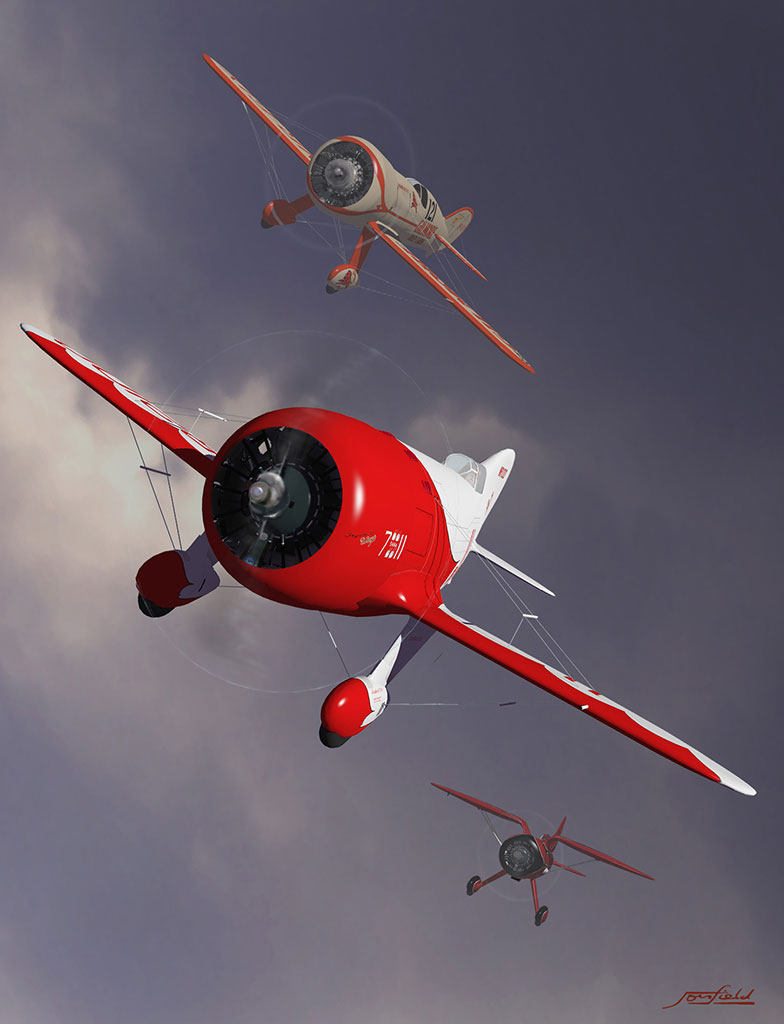
Doolittle Triumphant 1932 by Jon Field. Wedell was still a long way out in front and slicing around each pylon as if his plane was bound to the field with a rubber band. Doolittle took his time, plowing around the turns, but what must have seemed sloppy flying to spectators on the ground was really a knife-edge balancing act between control and catastrophe. Doolittle was keeping the R-1 well in hand, content to let its extra 200 horsepower reel in the Wedell-Williams. Going into his 10th and last lap, Doolittle was hot on the Wedell-Williams’ tail. Wedell held on to his lead by practically polishing the second pylon as the R-1 went wide. He pulled ahead as he fled down the back stretch, but the gap was too narrow to last; the spectators could see the Gee Bee bearing down on him just before both planes disappeared behind the tree line and turned the concealed corner. Then, after a tantalizing moment, the pair burst back into view, barreling down the front stretch and across the finish line—the Wedell-Williams No. 44 and the Gee Bee R-1 in the lead, but in reality separated by 10 miles and a place in the history books. Race finish. 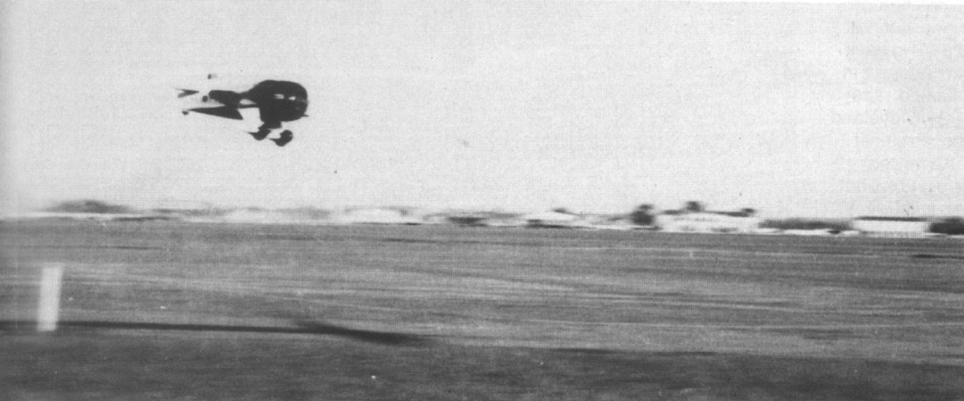
Doolittle in the R-1 at speed Leaving the rest to toil around their last laps, Doolittle immediately broke skyward for a leisurely turn onto a landing approach. As he settled the R-1 onto the grass and turned around at the end of the field, the grandstand overflowed; barely had its prop stopped turning when his plane was surrounded by ecstatic fans. Jimmy Haizlip’s son pushed forward, eager to offer his congratulations. Doolittle, his eyes watering (from hay fever, he claimed), simply replied, “Thanks very much, son. I only wish I’d flown as good a race as your dad did.” Since, in their staggered starts, Wedell had taken off after him, Doolittle had not officially caught him. Still, he had set a new average speed record of 252.687 mph, which would stand until 1936, and won $4,500 in addition to $1,575 for setting the new airspeed record. It was a pinnacle of air-racing achievement, and Doolittle saw little point in trying to top it; soon afterward he announced his retirement from racing. He still had a long career ahead of him, and remains perhaps best remembered for his exploits in World War II: leading the Doolittle Raid against Japan and the Fifteenth and Eighth Air Forces against Germany, receiving the Medal of Honor. Yet he always regarded the Gee Bee R-1 as “the most dangerous airplane I have ever flown.” But years later, when Jimmy Doolittle was asked why he flew the R-1 at all, he replied simply, “Because it was the fastest airplane in the world.” 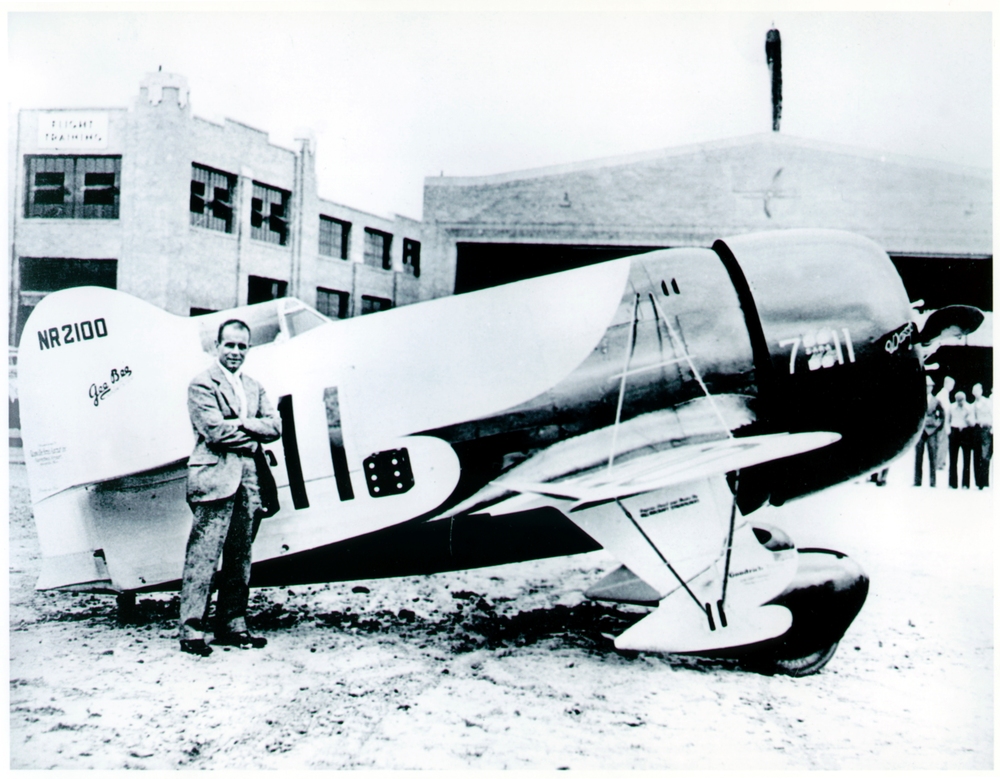
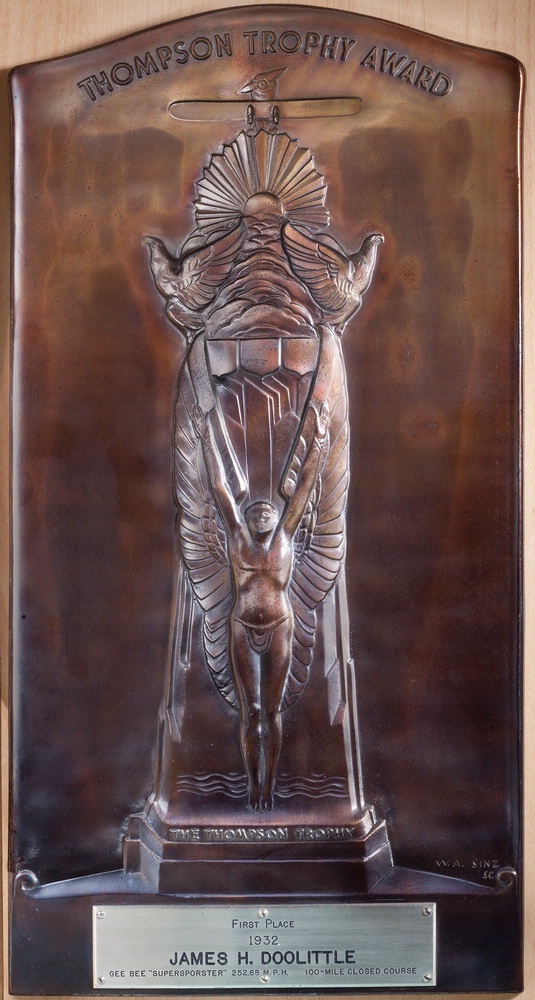
Thompson Trophy plaque awarded to Doolittle, currently on display in the Pioneers of Flight gallery at the National Air and Space Museum in Washington, DC.
More from Don Hollway:
|
